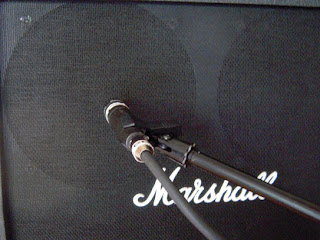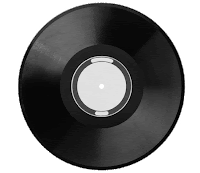Readers often send me their music to comment on, and while I'd love to get to everything, sometimes that's just not possible. That said, there are a number of traits that I notice among these songs that I thought was worth a mention, since they encapsulate many of the problems that I hear.
Before you send me a link to something to listen to, make sure that your song doesn't have any of these common problems first and save us both some time.
1. No groove: Every song has to have a pulse and it has to be made obvious so the listener can feel it. Every kind and genre of music has it. If it's not there, nothing else counts. Sometimes I hear songs where the groove just isn't there because of poor playing, or it's not made obvious in the mix.
2. Bad drum tracks: I don't mean the sound, but the actual playing. A number of times this year so far people have sent me their "masters" or CDs that have such horrible playing that the only person that's ever going to like it is their mothers.
What do I mean by bad playing? Rushed or slow drum fills, uneven tempo that's way too noticeable, floppy uneven kick and/or snare hits won't cut it.
The problem is that most musicians who've never worked on a real record project before are just not critical enough and let too much go that should have been re-recorded, fixed or edited. Your basic track is the most important thing you'll record next to the vocal. Make it as perfect as you can before you move on.
3. Tracks out of the pocket: This means that a part doesn't groove against the rest of the track. The number of songs I get with vocals that rush, or the bass being out of the pocket against the drums, or another instrument that way too early or too late is really a shame. Usually the songs I get have their owners more worried about the sound than the playing, but great playing beats great sound any day.
4. Out of tune: Tuners are cheap. Use one. There's no excuse in this day and age.
5. Bad recording: The real key to a great sound is a great player first, then a great instrument, although a great sounding instrument can make a mediocre player sound a lot better. Get those two first and everything else will take care of itself.
6. Bad mixing: Mixing is so much more than balancing instruments and adding effects. It's finding the groove and building around it, then finding the most interesting element and emphasizing it.
Here's the bottom line. There's a reason why pros exist. Spend the extra money to work with one, at least for one project. You'll be surprised how much you'll learn.
Oh and by the way. If you're going to ask that I critique your song, send me a link that I can stream (even
YouTube is OK). DO NOT send me a file. There's a legal issue involved and it fills up my hard drive and takes time to download. I can't promise that I'll listen, but I will try.
Also understand that sometimes there's just not much to say about a mix. You made some decisions that reflected your creative taste. They're not right or wrong, but they're probably different from the way others might've made them. They're not right or wrong either. Some questions just don't have an answer.
----------------------------------










